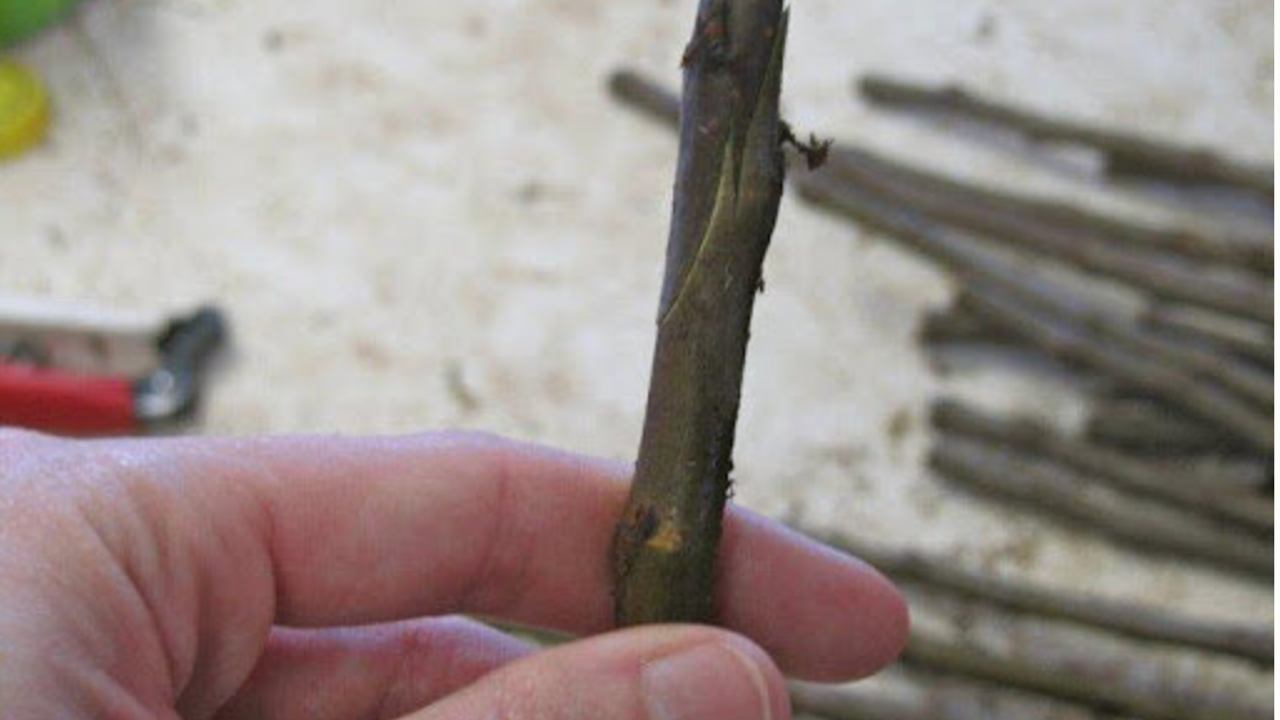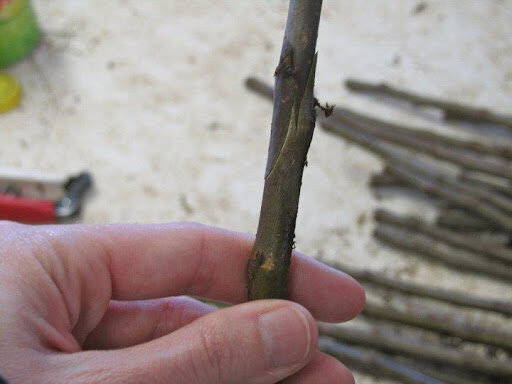
This article comes from the staff at Stark Bro's Nurseries & Orchards Company, a proud sponsor.
For over 200 years, Stark Bro's has helped people around America provide delicious home-grown food for their families.
Visit Stark Bro’s online at starkbros.com and learn from their vast library of educational videos on YouTube.


Image credit: Stark Bro’s
Folks often ask if it's possible to grow a fruit tree from seed. While it is possible, you cannot expect it to yield the same exact type of fruit that the seeds came from.
Unfortunately, for fruit trees (with some exceptions, such as citrus trees*), the seeds that you collect will produce a hybrid of two plants. The seed is the product of the pollen (male organ) from one tree and the flower (female organ) of the tree that produced the fruit.
Reproduction in Fruit Trees
Most apple trees, for example, are not self-fertile. This means they need another different apple tree blooming nearby (at the same time) to pollinate the blossoms that in turn become the fruit. This cross-pollination is sexual reproduction in fruit trees.
Even if a fruit-tree variety is considered to be self-pollinating, it is still receptive of other pollen — and the seeds of its fruit end up with all the history from past generations of both parent trees. The results of cross-pollination occur in the seeds, not the fruit. This is why cross-pollination can occur in your fruit tree's flowers and not affect the color or appearance of the tree's developing fruit.
If you were to plant the seed from a Honeycrisp apple, the resulting apple tree and its future fruit may display characteristics from anywhere in its lineage. The tree or its fruit may be similar to Honeycrisp or they may be throwbacks from somewhere in its genetic history, but – because they came from seed – they will not become a true Honeycrisp apple tree or true Honeycrisp apples.
In addition, the size and growing habits, and disease resistance for a fruit tree, is left unknown. While there is a lot of potential to grow a successful fruit tree from seed, the result could be not what you are expecting or willing to care for in your garden. Growing fruit trees is an investment of your time and resources. You want to be confident in what you grow and be knowledgeable about how to best take care of your trees.
Grafting for Consistency
One dependable way to ensure that the desired characteristics are maintained in subsequent fruit trees is through grafting. Grafting is a common horticulture technique and it is an efficient method to produce offspring genetically identical to the mother plant.
A grafted tree is consistent and has a reliable history of characteristics:
-
It blooms at a certain time.
-
It bears fruit at a certain time.
-
It has predictable traits like disease-resistance or cold-hardiness.
-
Its fruit can be expected to be a certain size, quality, and variety.

See the consistency in size and shape of these grafted fruit trees?
Image credit: Stark Bro’s
Grafting involves taking a scion or bud chip cut from the desired parent tree (for example, a Jonagold apple tree) and physically placing it onto a compatible rootstock. The variety and the rootstock are bonded, or grown together, as the tree heals.
Suckers are removed from the rootstock, and the Jonagold scion is allowed to grow into the new tree, thus maintaining its Jonagold identity. Since only one parent tree is involved in the process, the grafted tree will be true-to-name — and a true-to-name tree bears true-to-name fruit.
Most of Stark Bro's trees are either propagated through grafting — by joining a scion and rootstock together — or through budding. Budding involves placing a single vegetative bud into the side of the rootstock and wrapping it with cellophane tape until it heals together.
The results of grafting and budding are the same: a true-to-name tree.
Grafting Your Own Trees
It is recommended that you plant fruit and nut trees that were propagated through grafting or budding methods so that you know exactly what you are planting and how to best take care of it. If you can’t find the variety you would like from the nursery, you could try a grafting from a scion of your own – or from a neighbor.
Late winter, around February, is a great time to collect scion wood. You want to have your rootstock ready and have collected your scion before buds begin to emerge in spring. Until you are ready to graft, store the wood in the refrigerator, in a zip lock bag with a moistened paper towel (rung out).
As mentioned, grafting involves taking scion from the desired parent tree and adhering it onto a compatible rootstock. Make sure both pieces are similar in diameter and that they are grafting in the same family. For example, apples on apple, peach, nectarine, apricot, plum on prunus, etc.
In addition to the scion wood and rootstock, you will need a sharp knife. Also, grafting tape and grafting sealant will aid in keeping the pieces together as they join.
There are many techniques used to graft or bud fruit and nut trees. We suggest the whip and tongue graft method, using these steps:
-
Take your sharp blade and make clean cuts downward at a 45-degree angle on the root stock.
-
Then make a notch with your knife about ½ way down the slice you made. Do this on both the rootstock and scion.
-
Next, interlock the two pieces together, pressing them into place
-
Once you are satisfied with the two pieces, you can strengthen the union by using grafting tape or masking tape to hold the pieces together. Wrap the union tightly to ensure a good bond. You may opt to apply a thin layer of grafting sealant to cover the union.
Tip: keep the union moistened until you are ready to plant.
The goal is that the scion wood and the root stock successfully unite, and the roots begin to feed the scion – allowing you to grow the variety that you desire!
Thanks to Stark Bro's for sharing this grafting knowledge! Visit Stark Bro’s online at starkbros.com and learn from their vast library of educational videos on YouTube.

